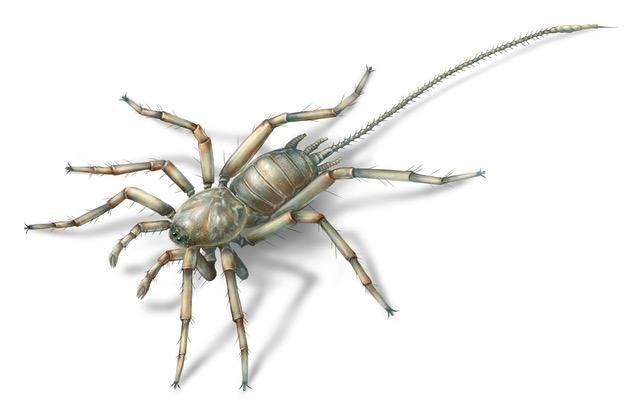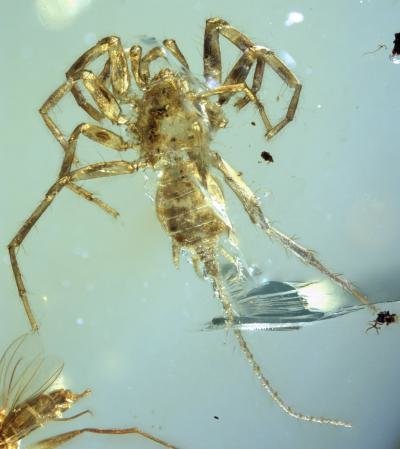If you already thought spiders were terrifying to look at, wait till you hear about a newly-discovered species of arachnid that had a long tail (as well as eight legs).
The animal, called Chimerarachne, was found by a team of researchers preserved in a piece of amber from a remote rainforest in Myanmar.
Although this particular fossil was from the mid-Cretaceous age (around 100 million years ago) the team think the animal could still be alive today.

The team from the University of Kansas had previously predicted the existence of these creatures, but placed then in older periods around 380 million years ago. But it wasn’t until amber was bought over to China, by dealers selling it to research institutions, that they actually came across this hard evidence.
Paul Selden of the Paleontological Institute, said: “There’s been a lot of amber being produced from northern Myanmar and its interest stepped up about ten years ago when it was discovered this amber was mid-Cretaceous; therefore, all the insects found in it were much older than first thought.”

No living spider currently on record has a tail, but this specimen has all the hallmarks of being a spider - fangs, pedipalps and silk-producing spinnerets at its rear.
As well as a long flagellum (or tail), which takes their tiny body size from around 2.5 millimetres to 5.5 millimetres in length.
They think that this tail acts like an antenna: “It’s for sensing the environment. Animals that have a long whippy tail tend to have it for sensory purposes,” said Selden.
They speculate that because it was trapped in amber, it was living on tree trunks: “For a spider to have become trapped, it may well have lived under bark or in the moss at the foot of a tree.”
But they don’t know if it wove webs like today’s spiders, saying: “Spinnerets are used to produce silk but for a whole host of reasons ― to wrap eggs, to make burrows, to make sleeping hammocks or just to leave behind trails. If they live in burrows and leave, they leave a trail so they can find their way back.
“These all evolved before spiders made it up into the air and made insect traps. Spiders went up into the air when the insects went up into the air. I presume that it didn’t make webs that stretched across bushes.”
Although this fossil is ancient, Selden believes that because the spider is so small and exists so remotely, it could actually still be around today.
